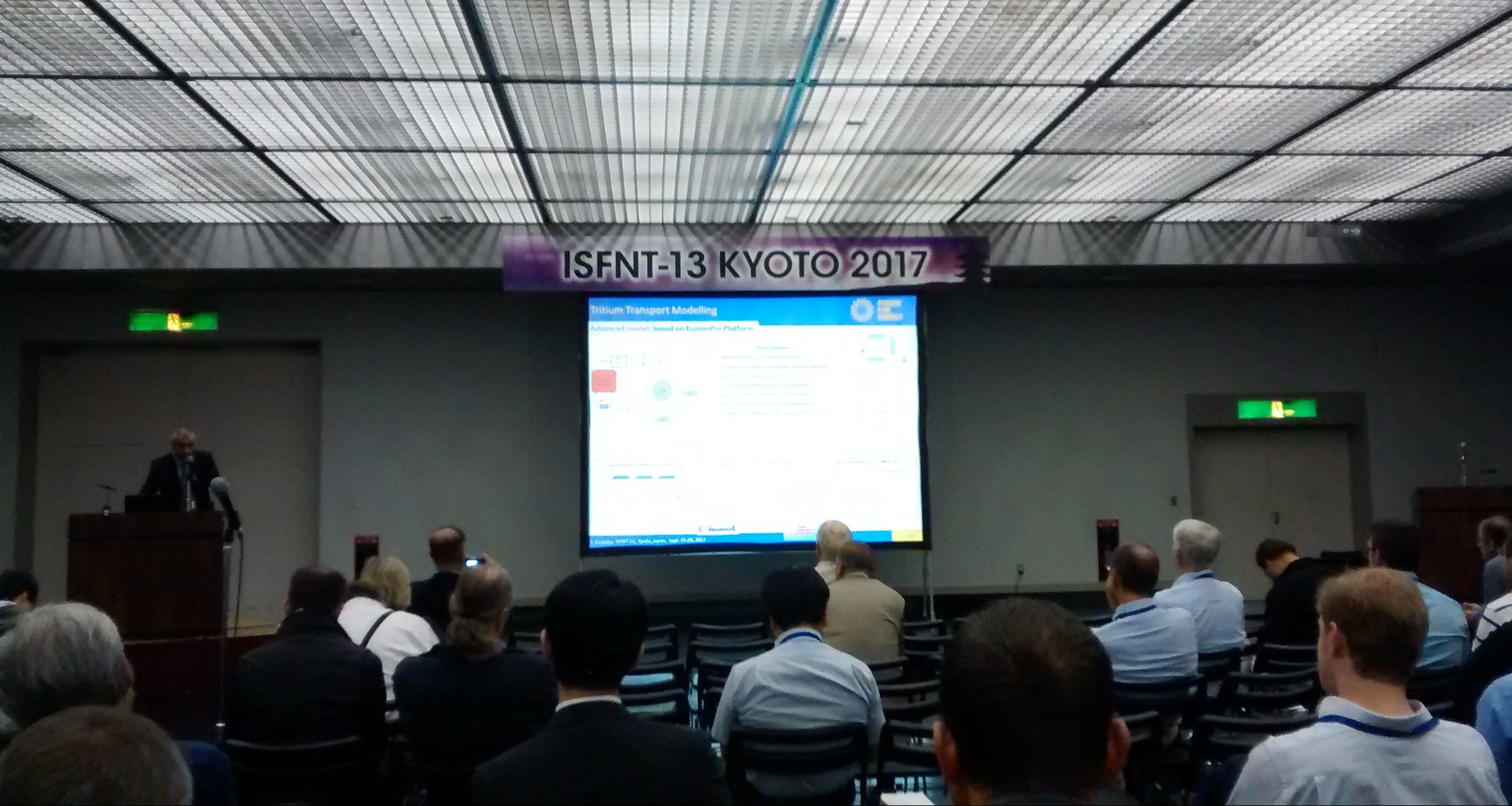
The 13th International Symposium on Fusion Nuclear Technology (ISFNT) symposium took place at Kyoto, Japan, from the 25th to the 29th of September. The aim of the conference was to share the current status of fusion world wide. The speakers gave an overview on ITER construction and DEMO design and as well as present status and progress on a wide variety of fusion reactor topics.

Our Fusion group member Dr Albert Gutiérrez participated in the conference and presented a poster entitled “New High Performance Computing Software for Multiphysics Simulations of Fusion Reactors“. The poster introduced the HPC mechanical code Alya to the fusion community as well as presented a new neutronics code within this tool.
It is well known that fusion reactor modelling requires significant computing resources. For example, the Marconi-Fusion supercomputer of EUROfusion is the 14th most powerful supercomputer in the world and dedicated solely for fusion simulations. Significant resources are required since the design of new fusion reactors demands analysis and modelling of its components as well as the plasma behaviour, which requires the power of thousands of CPUs working together. In our fusion group we are developing a highly efficient code based on Alya for fusion simulations to make efficient use of computing resources.

An (unknown so far..) design of fusion reactor is the SEM fusor: a vacuum chamber of about 0,2 m3, a couple of charged rings at a constant voltage of about 200 kV and a magnetic field of about 1 tesla. According the computer simulation the deuterium ions and electrons stay confined. Perhaps fusion will occur, in a rather easy way, similar as in a Farnsworth-Hirsch fusor, but now without inner grid. To find this out a real experiment should be carried out. See sem-fusor.com